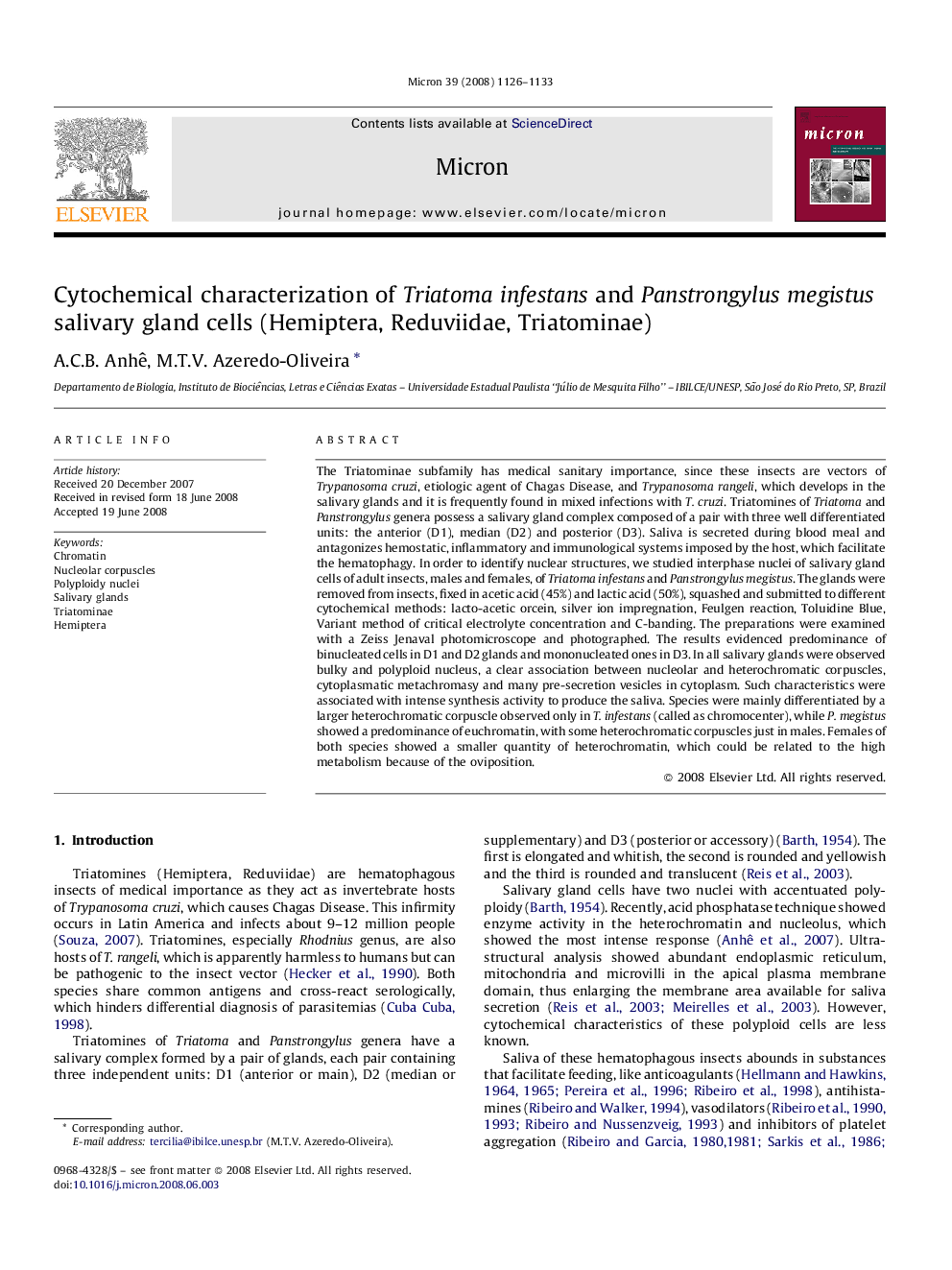| Article ID | Journal | Published Year | Pages | File Type |
|---|---|---|---|---|
| 1589678 | Micron | 2008 | 8 Pages |
The Triatominae subfamily has medical sanitary importance, since these insects are vectors of Trypanosoma cruzi, etiologic agent of Chagas Disease, and Trypanosoma rangeli, which develops in the salivary glands and it is frequently found in mixed infections with T. cruzi. Triatomines of Triatoma and Panstrongylus genera possess a salivary gland complex composed of a pair with three well differentiated units: the anterior (D1), median (D2) and posterior (D3). Saliva is secreted during blood meal and antagonizes hemostatic, inflammatory and immunological systems imposed by the host, which facilitate the hematophagy. In order to identify nuclear structures, we studied interphase nuclei of salivary gland cells of adult insects, males and females, of Triatoma infestans and Panstrongylus megistus. The glands were removed from insects, fixed in acetic acid (45%) and lactic acid (50%), squashed and submitted to different cytochemical methods: lacto-acetic orcein, silver ion impregnation, Feulgen reaction, Toluidine Blue, Variant method of critical electrolyte concentration and C-banding. The preparations were examined with a Zeiss Jenaval photomicroscope and photographed. The results evidenced predominance of binucleated cells in D1 and D2 glands and mononucleated ones in D3. In all salivary glands were observed bulky and polyploid nucleus, a clear association between nucleolar and heterochromatic corpuscles, cytoplasmatic metachromasy and many pre-secretion vesicles in cytoplasm. Such characteristics were associated with intense synthesis activity to produce the saliva. Species were mainly differentiated by a larger heterochromatic corpuscle observed only in T. infestans (called as chromocenter), while P. megistus showed a predominance of euchromatin, with some heterochromatic corpuscles just in males. Females of both species showed a smaller quantity of heterochromatin, which could be related to the high metabolism because of the oviposition.
